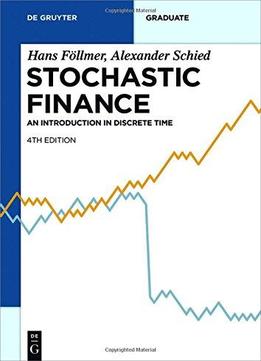
Stochastic Finance: An Introduction In Discrete Time, 4 Edition
by Hans Follmer /
2016 / English / PDF, EPUB
41.6 MB Download
This book is an introduction to financial mathematics. It is intended for graduate students in mathematics and for researchers working in academia and industry.
The focus on stochastic models in discrete time has two immediate benefits. First, the probabilistic machinery is simpler, and one can discuss right away some of the key problems in the theory of pricing and hedging of financial derivatives. Second, the paradigm of a complete financial market, where all derivatives admit a perfect hedge, becomes the exception rather than the rule. Thus, the need to confront the intrinsic risks arising from market incomleteness appears at a very early stage.
The first part of the book contains a study of a simple one-period model, which also serves as a building block for later developments. Topics include the characterization of arbitrage-free markets, preferences on asset profiles, an introduction to equilibrium analysis, and monetary measures of financial risk.
In the second part, the idea of dynamic hedging of contingent claims is developed in a multiperiod framework. Topics include martingale measures, pricing formulas for derivatives, American options, superhedging, and hedging strategies with minimal shortfall risk.
This fourth, newly revised edition contains more than one hundred exercises. It also includes material on risk measures and the related issue of model uncertainty, in particular a chapter on dynamic risk measures and sections on robust utility maximization and on efficient hedging with convex risk measures.
Contents:
Part I: Mathematical finance in one period
Arbitrage theory
Preferences
Optimality and equilibrium
Monetary measures of risk
Part II: Dynamic hedging
Dynamic arbitrage theory
American contingent claims
Superhedging
Efficient hedging
Hedging under constraints
Minimizing the hedging error
Dynamic risk measures











